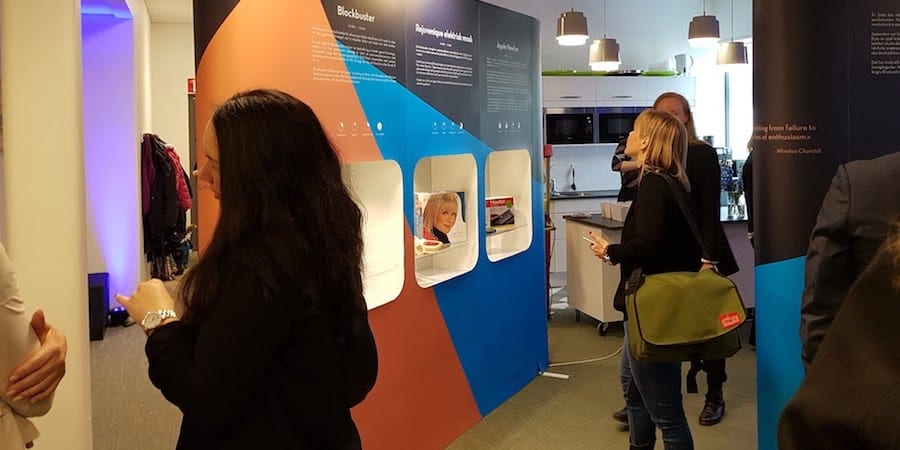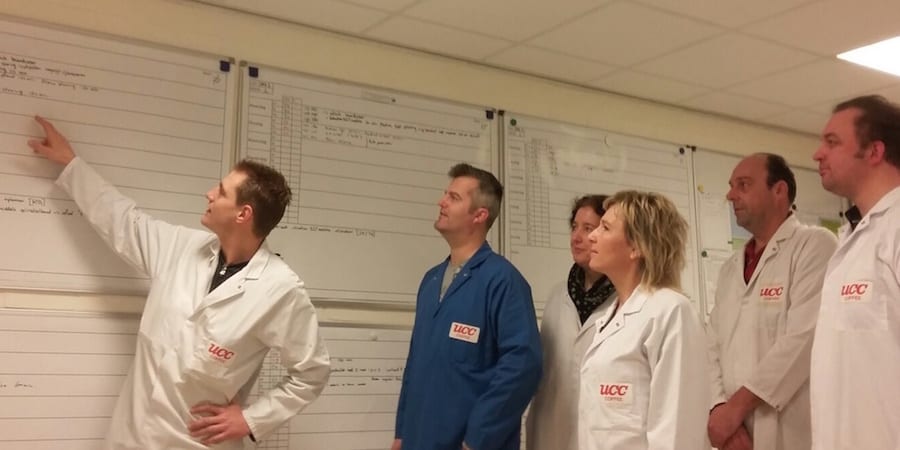
Failure is so important a museum about it has now opened
INTERVIEW – Last month the Museum of Failure opened in Sweden. We caught up with the curator, who tells us what the museum is all about and why failure is now “cool”.
Interviewee: Samuel West, Curator, Museum of Failure – Helsingborg, Sweden
First two pictures in the article are courtesy of Sofie Lindberg
Roberto Priolo: How did the idea of a Museum of Failure come about? What’s its purpose?
Samuel West: After almost a decade researching innovation, I got tired of only hearing about the “success stories”. There is quite a lot of literature out there focused on learning from failure, but it doesn't really reach people. So, I was looking for a new way to convey research findings – different from a book, a TED talk or a workshop.
Last summer I visited the Museum of Broken Relationships in Zagreb, Croatia, and had a bit of a eureka moment. That’s when I decided to open an actual museum, and for the past year I have been working full time to get things going. We opened to the public on June 7.
RP: What kind of products do you have on display?
SW: We want products that were both innovations and failures and that were meant to push the boundaries of innovation but ended up flopping. People suggested I display the Samsung Note 7 [the phone that catches fire], but that wasn’t a real innovation (and the reason it caught fire was poor quality control). In the same way, we don’t include items that were successful in the past but have now become obsolete. We currently have over 70 items, and donations coming in four-five times a week.
RP: Was it difficult to get your hands on the items?
SW: The first 10-20 were easy: I just had to Google “innovation failures” and find those items on eBay. Over time, it got more difficult to decide what I wanted in the museum and then find it. I trawled antique forums and classified sites for months, and paid for items in cash in dark alleys one time or two.

RP: Companies are probably not thrilled with the idea of their items being on display in your museum. Did you ever get any heat from them?
SW: At the beginning, I contacted many of the companies asking them to loan or donate items, but no one wanted to collaborate – even though I explained I planned to present the failures in a very respectable and positive light. They stopped replying to my emails and unfriended me on LinkedIn. I eventually decided to call it an art project and do what I want.
RP: What does this reluctance say about the prevailing corporate culture?
SW: I have been thinking a lot about this. Failure is deeply rooted in our psyche as a negative thing. Sure, failing is painful, and while at the Museum of Failure we don't want to glorify or celebrate it, we do believe that it deserves more attention. We must begin to learn from failure, because without it innovation is impossible.
Companies spend billions on PR and brand management initiatives, just to make sure that they are associated only with positive outcomes. This is very sad, especially when it happens in the young, “cool” companies. You’d expect them to understand the importance of learning from failure more than others, but they often don’t.

RP: What do you hope people learn from a visit to the museum?
SW: I want the museum to communicate in a hands-on way that we need to accept failure if we want innovation and progress. And this is true in every possible area – even life on this planet is based on evolution through mutation, which is essentially a genetic failure. The whole reason life exists on Earth is because of billions and billions of failures, so why don’t we appreciate it more?
The world has a lot of problems, from mass migration to climate change, but our approach to each of these issues is still based on searching for the one perfect solution (something we know doesn’t really exist). Instead, we need to run experiments and always try different avenues. I want people to understand that we all fail at some point and that not learning from those failures is a missed opportunity.
RP: What response are you getting from visitors?
SW: The concept of failure seems to really resonate with our visitors, because they are tired of the perfect picture companies paint for them and want to see what goes on behind the scenes. They want the story that is too often untold.
It’s great to see there is a movement starting across the world, with failure taking more and more space at conferences and events, such as FailCon. It looks like failure is becoming cool! I really don’t think a museum of failure would have been so popular a decade ago.

RP: Speaking of popularity, were you surprised by the huge media attention you got?
SW: I was completely shocked at first. I thought (and hoped) we would at least get some coverage on the Swedish press, so when I got that, plus CNN, BBC and the Business Insider (among others) I couldn’t believe it. A few weeks ago, a few guys from the largest media company in China visited to interview me. When we started the interview, which was being filmed on an iPhone, they told me there were 1.8 million people watching live. That night the number had grown to 360 million! Needless to say, our first visitors were Chinese.
RP: What is your favorite item and why?
SW: We have so many amazing flops, from the Trump board game to a handheld Apple computer, from a plastic bicycle made in Sweden to the widely mocked Bic for Her pens. I must say, however, that one of my favorites is the fat-free Pringles chips produced back in the 1990s. They used a fat substitute called olestra that didn’t make you fat, but famously gave you… um… gastro-intestinal issues.

THE INTERVIEWEE

Read more


CASE STUDY – How does a small food shop in Sichuan turn into a $30 billion chain with around 900 restaurants in several countries? By always going the extra mile for customers!


ARTICLE - Are some national cultures better suited to implement lean thinking? This article, based on research on 45 Volvo factories, reflects on the role of local cultures in the rollout of a corporate lean program.


FEATURE – Repetitive flexible supply is a very effective method to level production scheduling, but as a FMCG company in the Netherlands found out, sometimes a number of conditions must be met before the approach becomes viable.


FEATURE – The car industry is undergoing incredible change and ‘disruption’ is the word on everyone’s lips. How can companies survive it? Once again, Toyota shows us the way.

